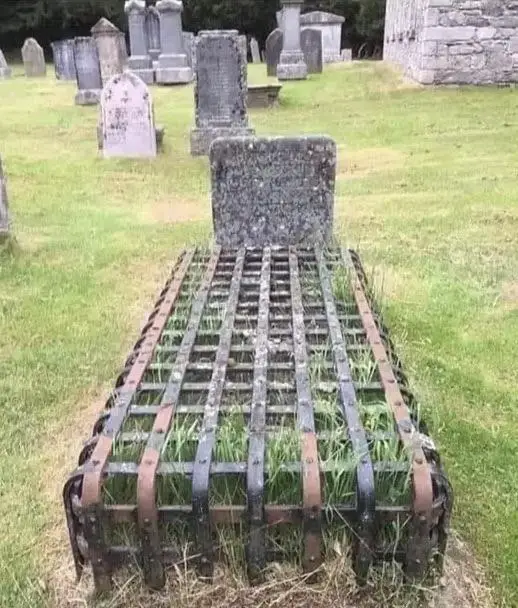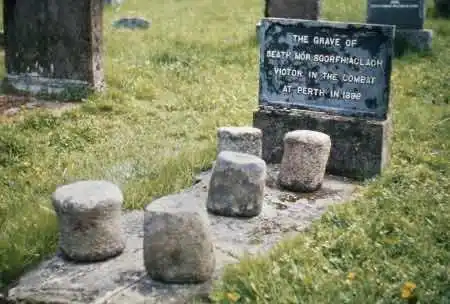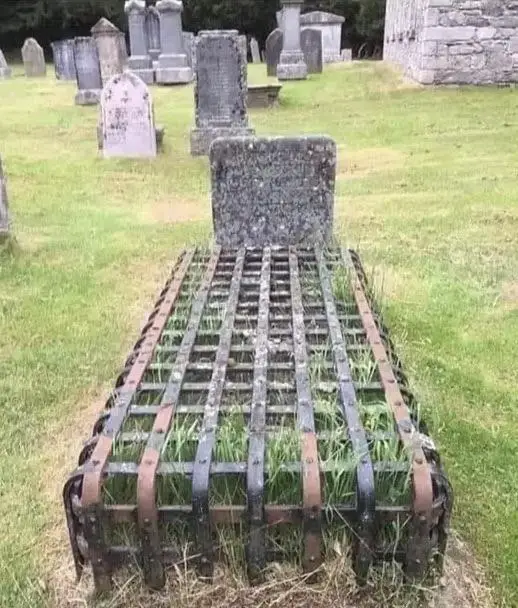Deep within the ancient Rothiemurchus Forest lies a legendary grave cloaked in mystery. This resting place belongs to Seath Mòr Sgorfhiaclach, a fearsome 14th-century warrior chieftain of Clan Shaw. His tale intertwines bravery, curses, and supernatural encounters, leaving a haunting imprint on Scotland’s folklore.
But this is no ordinary grave. Guarded by enigmatic forces and cursed stones, it remains a chilling testament to the power of the unseen. Let’s journey into the story of Seath Mòr and the mysterious forces said to protect his eternal rest.

The Unstoppable Warrior: Seath Mòr Sgorfhiaclach
Seath Mòr was a leader unlike any other. As a 14th-century chieftain of Clan Shaw, he ruled with unmatched strength, commanding both respect and fear from his clan and enemies alike. His name still evokes images of ferocious combat and unwavering dominance.
However, death did not silence this legendary warrior. Instead, his story morphed into a spectral legend. Tales claim his restless spirit lingers near his grave, challenging anyone daring enough to intrude upon his final resting place.
The Enigmatic Tomb in Rothiemurchus Forest
Seath Mòr’s grave lies hidden in Rothiemurchus, a forest rich with ancient energy and mystical allure. The tomb is marked by five large circular stones, often described as resembling “cheese wheels.” These stones are more than decorative—they’re believed to carry a powerful curse, adding an eerie element to an already ominous site.
The surrounding forest, with its towering trees and whispering winds, creates a haunting atmosphere. Travelers report spine-tingling encounters with Seath Mòr’s ghost. Appearing as a spectral warrior, he is said to challenge intruders to battle, offering one chilling ultimatum: stand your ground or risk losing your life. Those who face him with courage witness his ghost vanish, leaving them unharmed. However, fear or flight reportedly seals a different fate.
The Cursed Stones That Guard the Grave
Central to the mystery of Seath Mòr’s grave are the five circular stones atop his tomb. These stones are said to be cursed, serving as protectors of the grave—and deterrents for the living. Legends claim removing or disturbing these stones invites disaster.
One famous tale from the 19th century recounts a traveler who threw one of the stones into the nearby River Spey. By morning, the stone had mysteriously returned to its original place. Tragically, the traveler was found dead in the river. This chilling incident solidified the stones’ reputation as harbingers of death for anyone foolish enough to tamper with them.
Today, the stones are secured beneath an iron grate to prevent further disturbances. Yet, their ominous aura continues to captivate and terrify visitors.
The Spirit of The Old Religion

The legend of Seath Mòr is deeply rooted in The Old Religion, an ancient belief system that reveres the Earth’s magic and the interconnectedness of all things. This spiritual tradition, often tied to Celtic culture, views the Earth as alive and sacred, capable of binding spirits and protecting hallowed ground.
Seath Mòr’s tomb exemplifies these beliefs. The curses, guardian spirits, and supernatural occurrences surrounding the grave align with the idea that the Earth itself wields incredible power. It serves as a reminder to respect the land and its mysteries, for those who don’t may face consequences beyond understanding.
Encounters with the Spectral Chieftain
For centuries, locals and travelers alike have reported encounters with Seath Mòr’s ghost. His spectral figure appears to those who approach the grave, challenging them with the same indomitable spirit he displayed in life. These confrontations are not for the faint of heart.
Eyewitness accounts describe an overwhelming sense of dread when faced with Seath Mòr’s apparition. Yet, those who muster courage and composure often find the ghost disappears, seemingly satisfied with their bravery. These stories serve as both a warning and a testament to the power of facing fear with resolve.
Bodach an Duin: The Grave’s Mysterious Guardian

Seath Mòr’s ghost isn’t the only supernatural force protecting the tomb. The grave is also said to be guarded by Bodach an Duin, a temperamental spirit resembling an elf. Known for his fiery temperament, Bodach an Duin is believed to punish those who desecrate the sacred site.
Legend holds that this guardian spirit is fiercely loyal to the grave, ensuring no harm comes to the resting place of the great chieftain. Travelers are advised to tread carefully, respecting the site’s sanctity to avoid invoking his wrath.
Lessons from the Past: Respect the Power of the Unseen
The legend of Seath Mòr Sgorfhiaclach and his grave serves as a powerful reminder to respect the past and the forces that protect it. The forest of Rothiemurchus, with its ancient trees and ethereal energy, is more than a historical site—it’s a portal to a world where history, myth, and the supernatural converge.
The iron grate over the cursed stones symbolizes more than protection; it reflects the reverence we must show to such sites. Whether or not you believe in curses, the tales of illness, death, and spectral encounters surrounding Seath Mòr’s tomb are enough to make anyone think twice before tampering with it.
Conclusion: A Legend That Lives On

The tale of Seath Mòr Sgorfhiaclach and his cursed grave endures as a captivating blend of history, folklore, and the supernatural. It speaks to the essence of The Old Religion, celebrating the Earth’s magic and the mysteries it holds.
For those daring enough to explore the Rothiemurchus Forest, Seath Mòr’s grave is a haunting yet mesmerizing destination. It stands as a testament to the power of the Earth, the legacy of a warrior, and the consequences of disturbing forces beyond human comprehension. Whether you’re drawn by adventure, curiosity, or a brush with the paranormal, this legend leaves an unforgettable mark, echoing through the ages as a chilling reminder of the unseen.


